 Kossack slinkerwink tells us that Vice President "Amtrak Joe" Biden has spoken out against the filibuster:
Kossack slinkerwink tells us that Vice President "Amtrak Joe" Biden has spoken out against the filibuster:Vice President Joe Biden said at a Florida fundraiser Sunday that the 60-seat threshold for passing legislation in the Senate put a dangerous new roadblock in the way of American government.
"As long as I have served ... I've never seen, as my uncle once said, the constitution stood on its head as they've done. This is the first time every single solitary decisions has required 60 senators," Biden said. "No democracy has survived needing a supermajority."
Well, if this is about the survival of our Democracy, I say it may be time to recall the parliamentary maneuver threatened by the Republicans in 2005, dubbed the "nuclear option". Since this is a more precisely targeted version of that parliamentary maneuver, I refer to it as the "Neutron Bomb".
Recall those distant days of 2005 ...
Kossack homunq explained on 12 January:
1. the 2005 "Nuclear option".
Wikipedia, emphasis mine:A senator makes a point of order calling for an immediate vote on the measure before the body, outlining what circumstances allow for this. The presiding officer of the Senate, usually the vice president of the United States or the president pro tempore, makes a parliamentary ruling upholding the senator's point of order. The Constitution is cited at this point, since otherwise the presiding officer is bound by precedent. A supporter of the filibuster may challenge the ruling by asking, "Is the decision of the Chair to stand as the judgment of the Senate?" This is referred to as "appealing from the Chair." An opponent of the filibuster will then move to table the appeal. As tabling is non-debatable, a vote is held immediately. A simple majority decides the issue. If the appeal is successfully tabled, then the presiding officer's ruling that the filibuster is unconstitutional is thereby upheld. Thus a simple majority is able to cut off debate, and the Senate moves to a vote on the substantive issue under consideration. The effect of the nuclear option is not limited to the single question under consideration, as it would be in a cloture vote. Rather, the nuclear option effects a change in the operational rules of the Senate, so that the filibuster or dilatory tactic would thereafter be barred by the new precedent.
humonq goes on to argue that:
Note that the nuclear option needs at least one, and probably two, people to assert that the current filibuster is unconstitutional. In 2005, the Republican argument was that Judicial filibusters were unconstitutional, but legislative ones are constitutional. This relied on some pretty thin reasoning that Article II, Section 2, of the U.S. Constitution, which says the president "shall nominate, and by and with the Advice and Consent of the Senate, shall appoint ... Judges...", requires an up-or-down vote.
I'll come back to the nuclear option later (I bet you can see where I'm going), but for now, just note that the nuclear option as proposed in 2005 is NOT relevant to legislative logjam, because it would only eliminate judicial filibusters.
Take Out Your Copy of the Constitution ...
Except ... notice that the threat to use the Nuclear Option was not based on the reasoning standing up in the Supreme Court, but in the precedent set when 51 Senators, or 50 Senators plus the VP, votes to table the appeal to the decision of the chair.
And there is Constititional language that specifically addresses the powers of the Senate on a particular kind of legislation, including the health insurance reform bill as well as the legislation to establish any cap and trade system: which is to say, the first clause of Article I, Section 7 of the Constitution:
Section 7 - Revenue Bills, Legislative Process, Presidential Veto
All bills for raising Revenue shall originate in the House of Representatives; but the Senate may propose or concur with Amendments as on other Bills.
The powers of the Senate with respect to Revenue bills are spelled out: they may propose or concur with Amendments. That's why Senate revenue bills always start with language that basically strips out the whole of the House language except for enabling the law, then put in the Senate version as an amendment.
And notice that the Senate has hobbled its own powers to amend with its toleration of the filibuster process: it is the Senate rules that dictate that an amendment to the House bill may be filibustered.
So, suppose the House bill as passed included a rider that specifies that after passage by the House, and after a certain number of additional legislative days have elapsed, any Senator may bring the bill for a vote, including any amendments that the Senate may have already passed.
Now the Senate might elect to ignore this rider, but of course, as with the threat of the Nuclear Option: it also might not. A Senator makes a point of order that under the terms of the rider, he wishes the measure be brought to a vote. The President of the Senate rules in favor under Article 7 read as meaning that the rider stands unless and until the Senate amends the bill to remove it. An opponent appeals the decision of the chair. That is moved to be tabled (which cannot be filibustered). The motion to table passes, possibly by 50+Biden. And then the measure is brought to a vote.
Now, note, if the House does this at the current point in the process, that would be with whatever other amendments deemed necessary to allow the Senate version of the bill to pass the House. If the Senate passes it without amendment, it goes straight to the President's desk, as being passed in the same form by both chambers. If some amendments have been made before the filibuster logjam is broken with this maneuver, then the House would have to pass that version, and then it could go to the President.
So, the minimum requirements would appear to be:
- A house majority, willing to pass the rider
- 41 Senators willing to protect the rider with the threat or action of filibuster of any amendment that would remove it
- One Senator willing to move under the rider when the time has elapsed
- One Chair willing to rule on Constitutional Grounds that the rider applies unless and until amended by the Senate
- 51 Senators, or 50 Senators + Biden, willing to explode the Neutron Bomb on filibusters on Revenue Bills
... except, you will recall, the "Nuclear Option" was never used, yet the Democrats caved on nominating odious Supreme Court justices.
Note that while many Senators are more or less in the pockets of health insurance companies, some are more deeply in the pockets of Oil Companies or sometimes Coal Companies. And if the Energy Companies think that it is more likely that they could defeat the Neutron Bomb directly in the context of cap and trade ... they might instruct their bought and paid for Senators to stand down on forcing the Neutron Bomb to be exploded in the Health Care debate.
Since once you've blown that particular hole in the "continuing rules" of the Senate, its open, and a similar rider could be employed whenever the House knows it has 41 Senators willing to defend it and 51 votes for passage ... bearing in mind that repeating a precedent is not as politically fraught hard as setting one.
So if the House Republicans (and Liebericans) cave (as they did before Christmas under threat of snowstorm) and do not filibuster so that the bill goes to a vote without anyone triggering the neutron bomb option ... well, then that leaves the neutron bomb back in the silo.
Though ... note that as the by the minority of the filibuster power continues, it would face a growing risk that the Neutron Bomb will eventually be exploded.
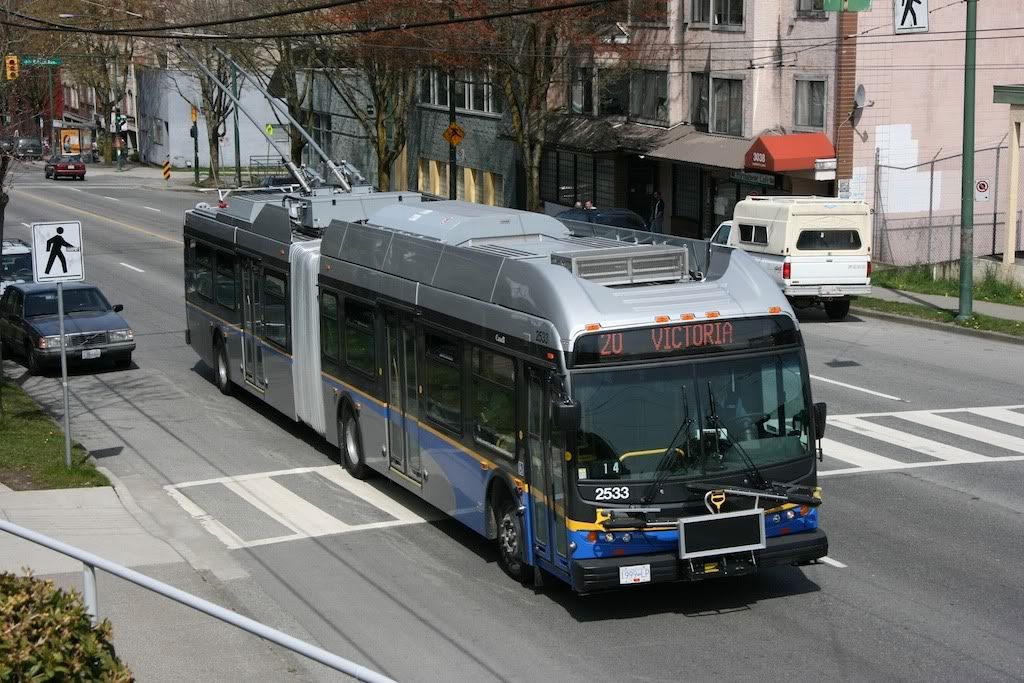 Note that the statement is abbreviated for the title. The full statement is, a common carrier like a train, bus, or plane that running a profit based on passenger revenue while paying its full operating and capital cost is charging too much for its tickets.
Note that the statement is abbreviated for the title. The full statement is, a common carrier like a train, bus, or plane that running a profit based on passenger revenue while paying its full operating and capital cost is charging too much for its tickets.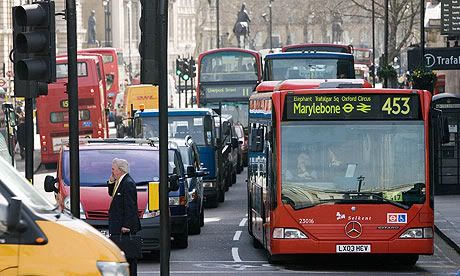 A common carrier transport service provides multiple services.
A common carrier transport service provides multiple services. The material efficiencies of use of the rolling stock would be captured in the capital cost of the system - except there are substantial material costs that we simply ignore. Handing a free ride, for example, to those dumping CO2 into the atmosphere despite the fact that they have done nothing to establish that it is safe to do so - is only one of the more egregious examples.
The material efficiencies of use of the rolling stock would be captured in the capital cost of the system - except there are substantial material costs that we simply ignore. Handing a free ride, for example, to those dumping CO2 into the atmosphere despite the fact that they have done nothing to establish that it is safe to do so - is only one of the more egregious examples.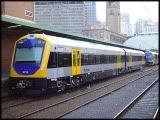 Those private users of a congested public resource like the public roadway would pay users of common carriers based on the relative space efficiency of that common carrier. So mass transit would get the most subsidy per seat, then various forms of light rail, then (actual) Bus Rapid Transit and Quality Buses, then shuttle buses. This payment would be for seats occupied over the load factor that has the same space consumption as the average private vehicle.
Those private users of a congested public resource like the public roadway would pay users of common carriers based on the relative space efficiency of that common carrier. So mass transit would get the most subsidy per seat, then various forms of light rail, then (actual) Bus Rapid Transit and Quality Buses, then shuttle buses. This payment would be for seats occupied over the load factor that has the same space consumption as the average private vehicle. And all property owners served by common carriers would pay a property tax to reflect the portion of their property value supported by the existence of the common carrier. Since it is dedicated transport corridors that have clearly discernable property value benefits, this payment would be distributed by the frequency of trips on dedicated transport corridors to distinct destinations.
And all property owners served by common carriers would pay a property tax to reflect the portion of their property value supported by the existence of the common carrier. Since it is dedicated transport corridors that have clearly discernable property value benefits, this payment would be distributed by the frequency of trips on dedicated transport corridors to distinct destinations.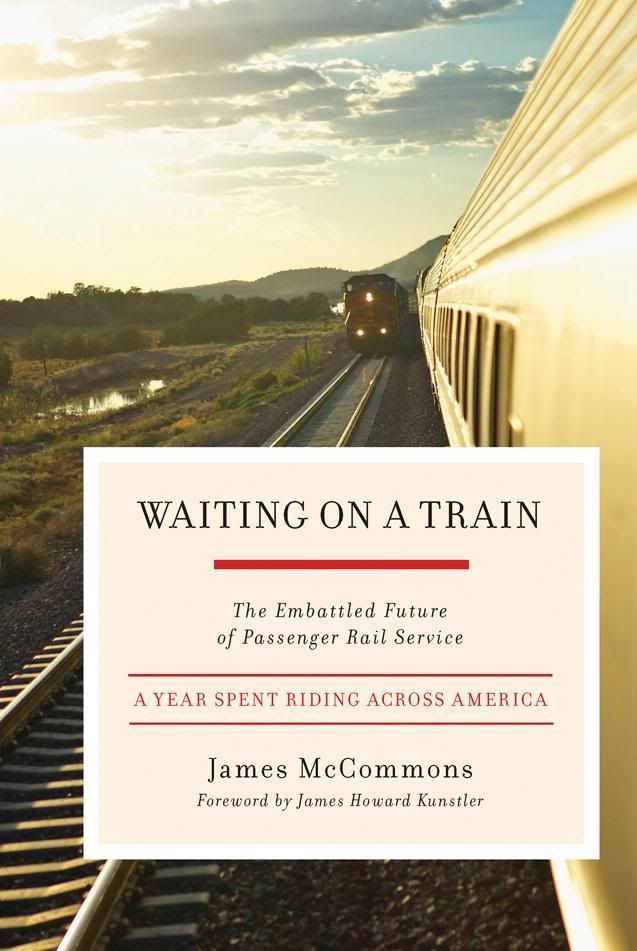 Flying home from the Economist's national conference Atlanta (see note1) my brilliant entertainment plan to pass the day lost flying home from Atlanta fell apart.
Flying home from the Economist's national conference Atlanta (see note1) my brilliant entertainment plan to pass the day lost flying home from Atlanta fell apart.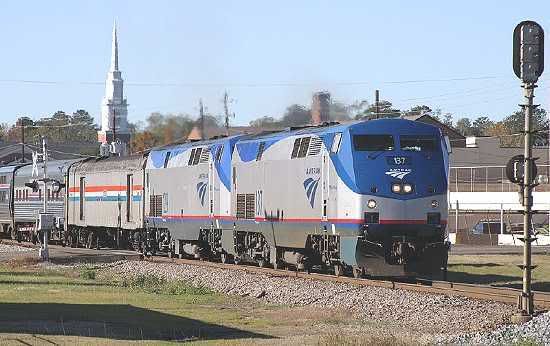 One of the striking passages in the book is the following:
One of the striking passages in the book is the following: By the second half of 2008, under the pressure of the capacity constraints that were preventing the Class I railroads from taking full advantage of the windfall of the Oil Price Shock, the major railroads had adopted a new line (though of course, I will believe that Union Pacific is an enthusiastic supporter of the industry line when I hear tell of some direct evidence):
By the second half of 2008, under the pressure of the capacity constraints that were preventing the Class I railroads from taking full advantage of the windfall of the Oil Price Shock, the major railroads had adopted a new line (though of course, I will believe that Union Pacific is an enthusiastic supporter of the industry line when I hear tell of some direct evidence):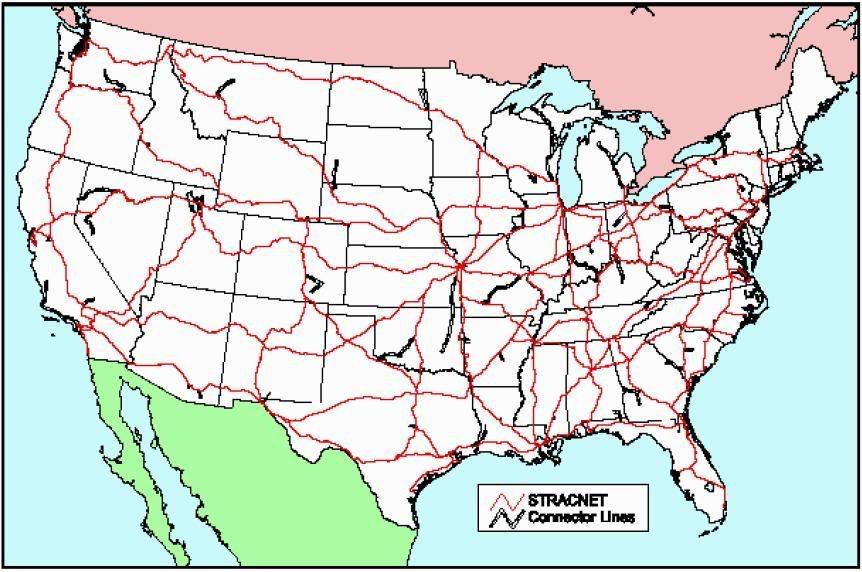 Now, what the railroads are pushing for is an investment tax credit. However, as discussed before, the Steel Interstate strategy opens up the door to something far more dramatic.
Now, what the railroads are pushing for is an investment tax credit. However, as discussed before, the Steel Interstate strategy opens up the door to something far more dramatic.
